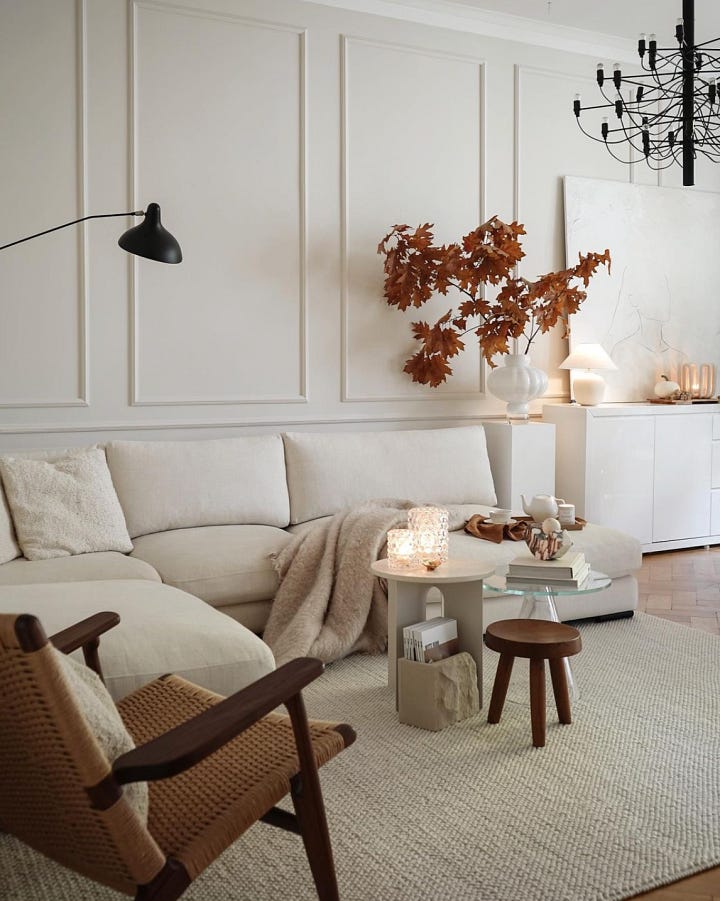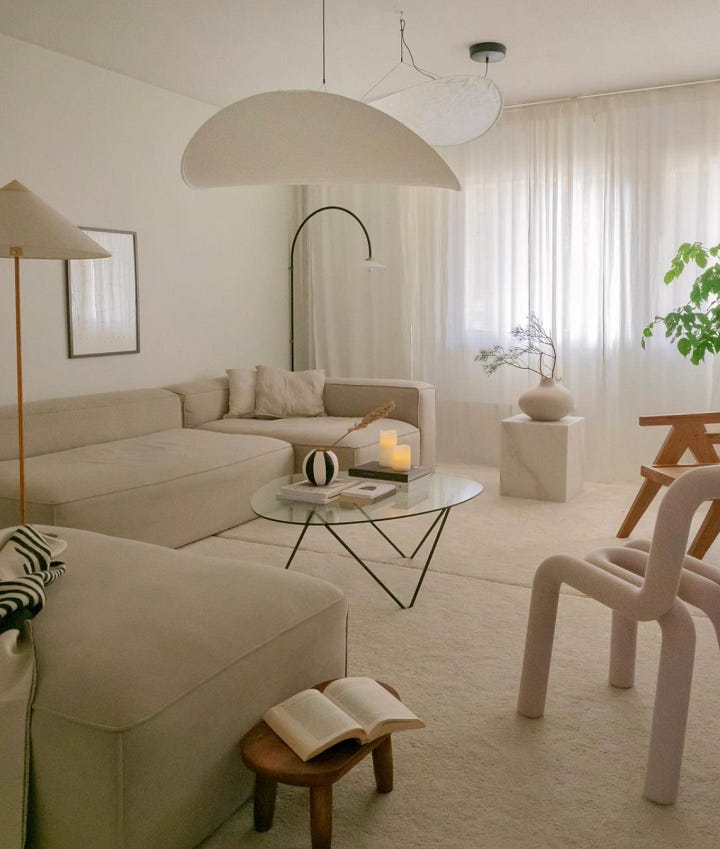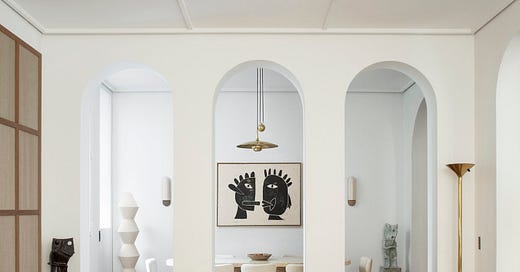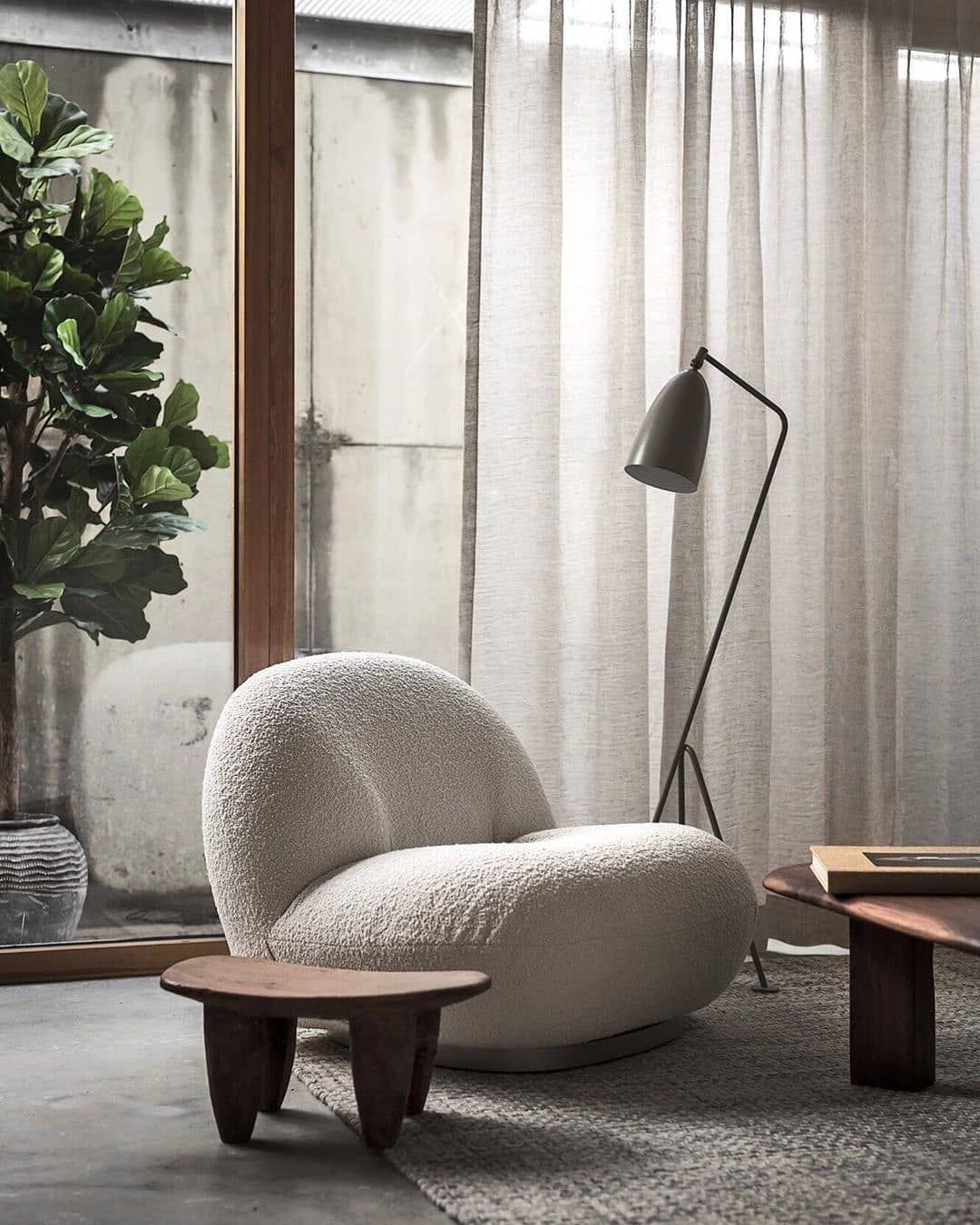6 Ways to achieve Soft Minimalism at home
Over the last couple years, I have seen a gorgeous décor style appear more often on my social media feeds – a subtle blend of pared back minimalism with softening cosy warmth, otherwise known as Soft Minimalism. This style takes the best of classic minimalist styling and teams it with wistful palettes, sumptuous fabrics, and dreamy silhouettes. A softer approach to Scandinavian or Purist décor, Soft Minimalism is identified by ‘cosy perfectionism’ and ensures a space feels timeless and appealing.
Here I list 6 key design features of Soft Minimalism:
1. SIMPLE LAYOUT
The fundamentals of Minimalism design include the notion of living with less, encouraging a striped down existence with only the essentials. Soft Minimalism inspires this through simplistic, thoughtful, and flexible design. For example, when decorating an open layout, it is imperative to incorporate clever storage, reducing clutter from view and therefore giving your room ‘breathing space’. Simplistic layouts certify that form follow function, a home that is easy to maintain as well as flexible. By lessening your items on display, you are then able to show off the pieces you truly love, exhibiting your personality in a minimalist manner.
2. LAYERED TEXTURES
There is an art to ensuring your minimalist space does not seem cold and unwelcoming – this is where the softin Soft Minimalism comes into play. One of the best ways to guarantee your purist styled home feels snug is to involve lots of textural layers. Textures can consist of furnishings and fabrics (linen, cotton, wool) as well as materials such as brickwork, wallpaper, and wood. A handy tip in completing a styled space is layering materials (such as rugs and cushions) guaranteeing your home is comfortable, cosy, and characterful. Texture makes your space feel alive and embracing a variety of materials, whether it is layering 2 rugs or soft window treatments within a hard-edged space – these methods support clean living whilst also feeling warm and welcoming.


3. SUBTLE PALETTE
One of the key characteristics of Soft Minimalism is a subdued colour palette inspired by nature. Muted neutral tones of beige, ivory, taupe, and grey are a staple in classic minimalism and by including them in various materials and textiles your space has a warmth rather than seeming clinical and bland. Subtle earthy neutrals give you more room for experimentation within interior design and by mixing shades and hues of a few cosy tones a room will appear open, breezy, and elegant.
4. SOFT LIGHTING
Soft Minimalism can be achieved and enhanced by clever lighting and illumination. Lighting plays a vital role in creating a mellow, calming space by either highlighting certain corners in your space, giving a warm ambience over the whole room, or focusing light on a particular section. There are 3 main types of lighting in Soft Minimalism – ambient lighting brightens the space, accent lighting concentrates on a focal point and tasklighting can be used to show off a particular piece. It is significant to select the right bulb temperature, for example warm lighting forms a soft atmosphere and dimmer switches help produce a reassuring and restful mood as you adapt your environment accordingly.
Soft Minimalism Furniture Pick
A vital staple of Soft Minimalism is the cloud chair/ sofa. A cushy, dreamy piece of furniture that is characterised by low seating, sinuous curves, and upholstery in boucle fabrics. Boucle is a yarn with curled ply that feels spongy and decadent, most known as the fabric used in the iconic and chic Chanel suits. These cloud chairs and sofas get their name from the fact that often the legs of the furniture are out of sight, consequently giving an illusion that the piece is simply floating on air.
5. WARM MATERIALS
Soft Minimalism is often characterised by an organic feel concentrated on handcrafted textures that are still pared back but feel more homely. With wood, concrete, limestone, plaster, and brick there is a sense of movement and warmth in a space. Knowing how to style and decorate around these elements is how you ensure your space is serene and softening. Wood is most often the best choice for Soft Minimalism as it feels simplistic and pares well with most neutral palettes as well as being available in a variety of tones and applied in diverse ways.
6. PURPOSEFUL DESIGN
Soft Minimalism follows the same credentials as classic minimalist style, especially the need to design with intent. Decorate with restraint and focus on the practicalities of how you live and use your home. Start with a central part of the space (for example the seating or bed), determine what you want the highlights of the room to be, then work outwards concentrating only on what you love. Whatever you are left with afterwards simply get rid of! In purposeful design your home is catered to your personality and way of living. Striking that all important balance between minimal and cosy ensures your space will give an impression of comfort, luxury, and ease.






